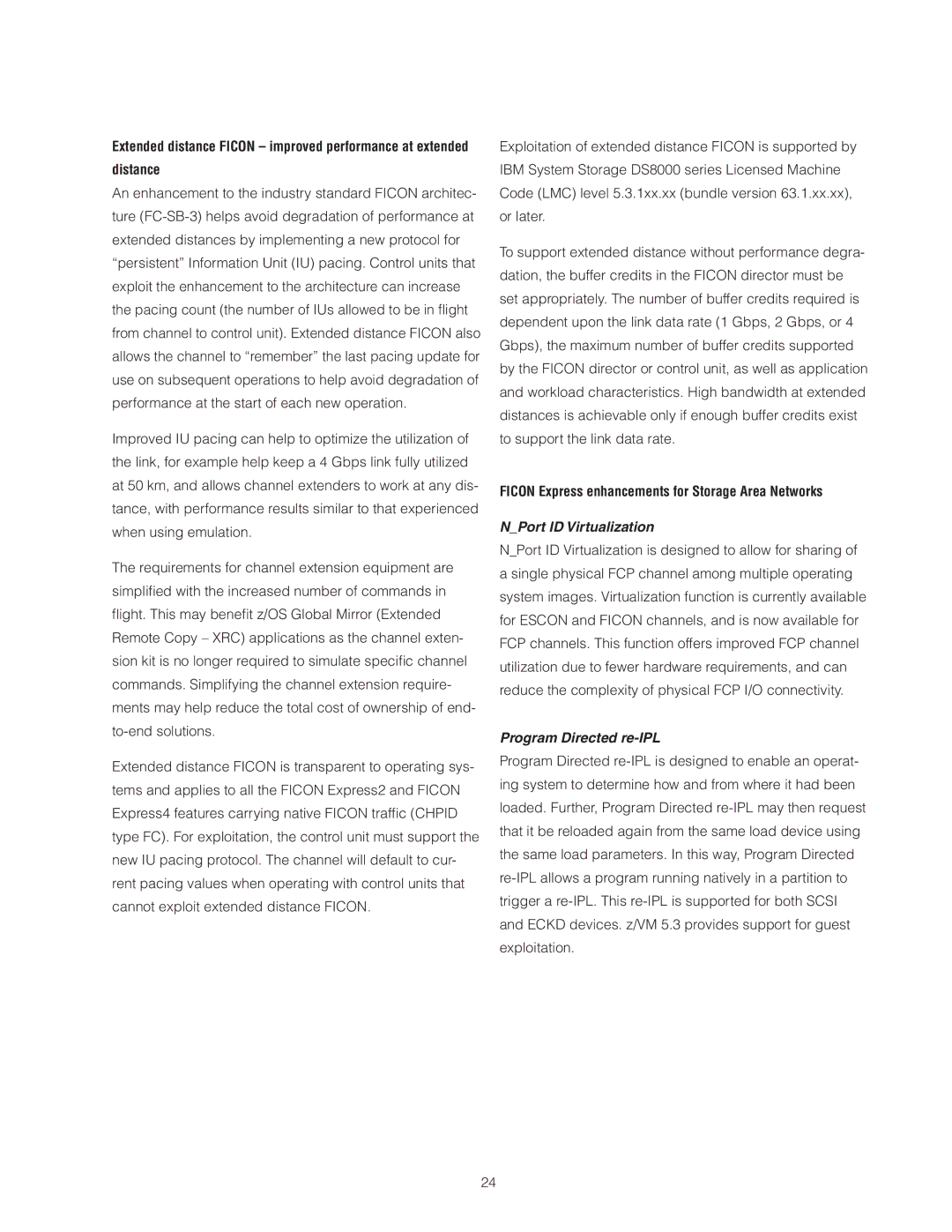Extended distance FICON – improved performance at extended
distance
An enhancement to the industry standard FICON architec- ture
Improved IU pacing can help to optimize the utilization of the link, for example help keep a 4 Gbps link fully utilized at 50 km, and allows channel extenders to work at any dis- tance, with performance results similar to that experienced when using emulation.
The requirements for channel extension equipment are simplifi ed with the increased number of commands in
flight. This may benefi t z/OS Global Mirror (Extended Remote Copy – XRC) applications as the channel exten- sion kit is no longer required to simulate specifi c channel commands. Simplifying the channel extension require- ments may help reduce the total cost of ownership of end-
Extended distance FICON is transparent to operating sys- tems and applies to all the FICON Express2 and FICON Express4 features carrying native FICON traffi c (CHPID type FC). For exploitation, the control unit must support the new IU pacing protocol. The channel will default to cur- rent pacing values when operating with control units that cannot exploit extended distance FICON.
Exploitation of extended distance FICON is supported by IBM System Storage DS8000 series Licensed Machine Code (LMC) level 5.3.1xx.xx (bundle version 63.1.xx.xx), or later.
To support extended distance without performance degra- dation, the buffer credits in the FICON director must be set appropriately. The number of buffer credits required is dependent upon the link data rate (1 Gbps, 2 Gbps, or 4 Gbps), the maximum number of buffer credits supported by the FICON director or control unit, as well as application and workload characteristics. High bandwidth at extended distances is achievable only if enough buffer credits exist to support the link data rate.
FICON Express enhancements for Storage Area Networks
N_Port ID Virtualization
N_Port ID Virtualization is designed to allow for sharing of a single physical FCP channel among multiple operating system images. Virtualization function is currently available for ESCON and FICON channels, and is now available for FCP channels. This function offers improved FCP channel utilization due to fewer hardware requirements, and can reduce the complexity of physical FCP I/O connectivity.
Program Directed re-IPL
Program Directed
24
